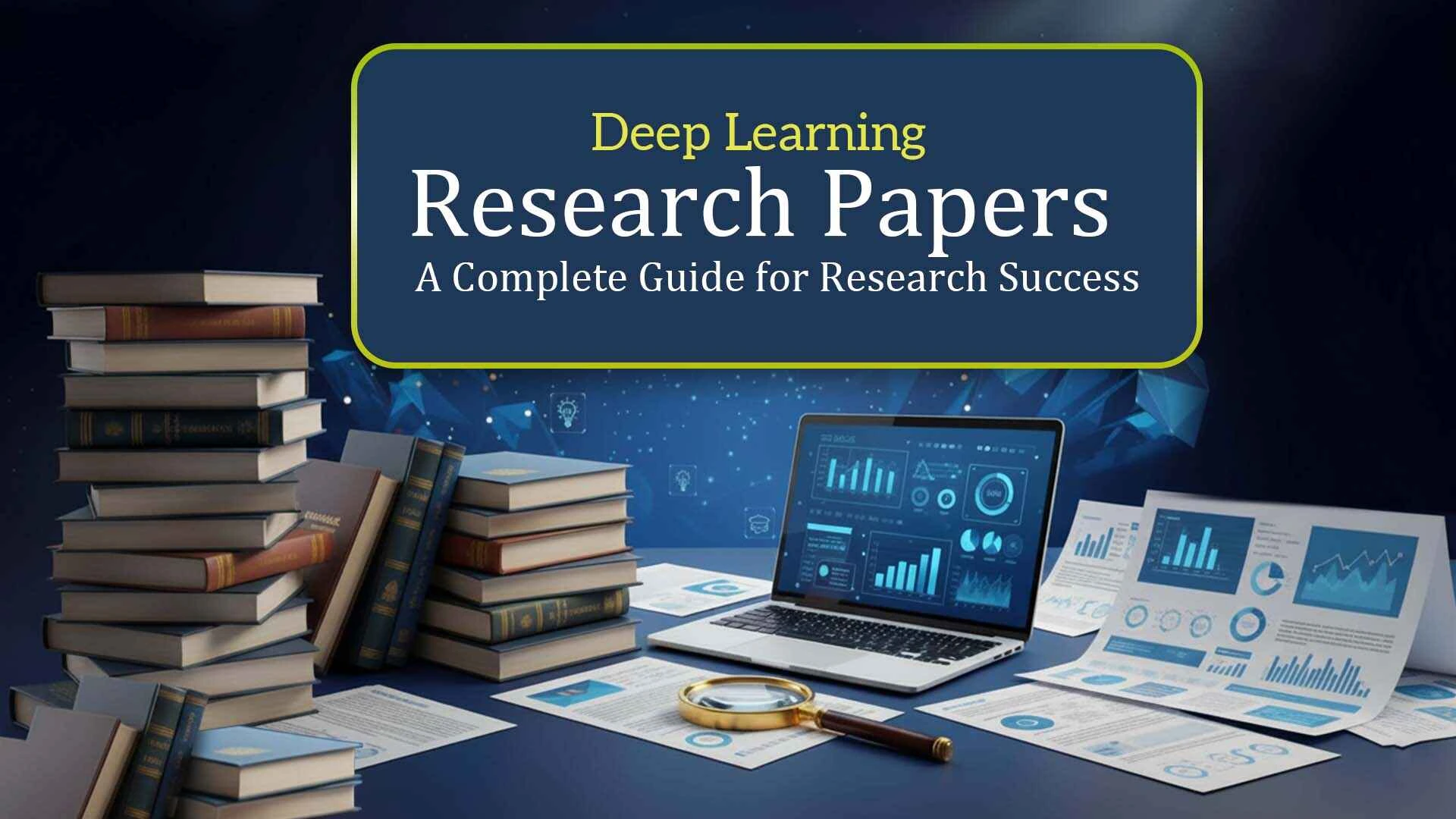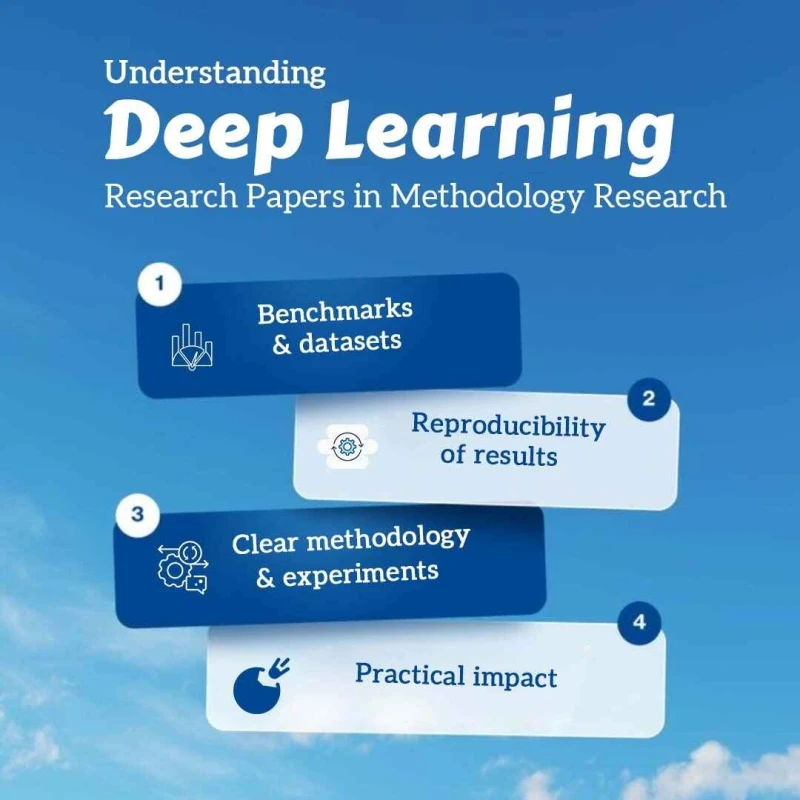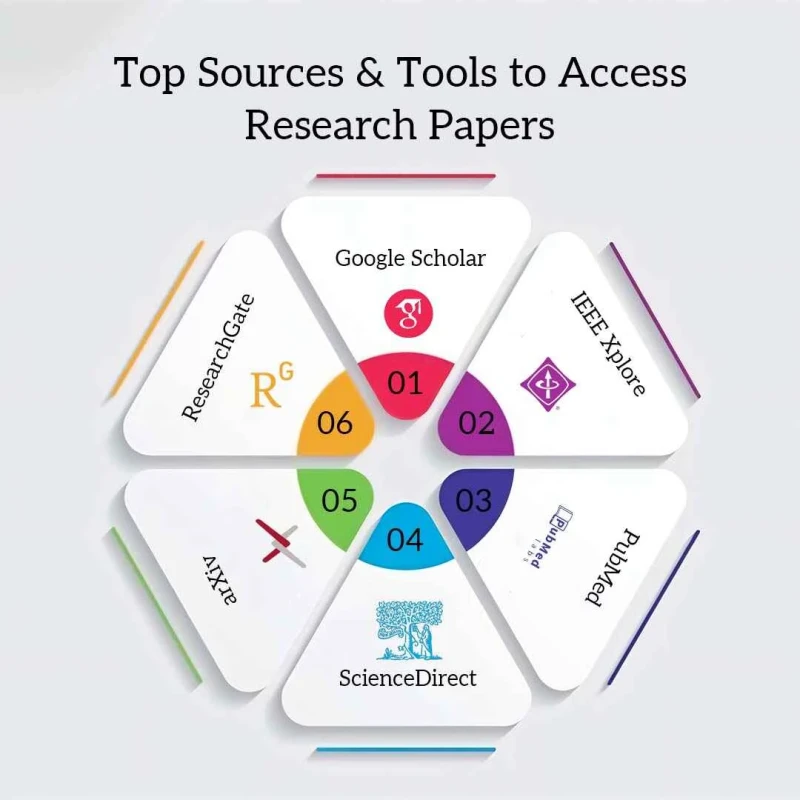
Esther F
"Artificial intelligence is the new electricity." - Andrew Ng. This statement reflects how deep learning is powering breakthroughs across healthcare, finance, robotics and beyond. From detecting diseases to enabling self-driving cars, the applications which are relevant to deep learning are reshaping the world.
Deep learning research paper matters because it drives innovations forward. For students, they offer a platform to build academic credibility; for researchers, they open new avenues for discovery; and for professionals, they bridge theory and industry practice. Publishing impactful work in this field advances knowledge but also creates lasting career and research opportunities.
With deep learning fueling innovations in healthcare, finance, robotics and more. This guide will walk you through how to succeed in deep learning research and position your work for the greatest efforts.

Deep learning research papers are formatted as an academic document that presents algorithms, benchmarks and reproducible results based on methodology research. As Neil Armstrong once said, “Research is creating new knowledge,” and these papers embody that principle by acting as knowledge bridges. They allow students, researchers, and professionals to learn from existing work, critique approaches, and spark innovations.
Some papers are algorithm-focused, introducing novel models; others are application-focused, demonstrating real-world solutions. While survey or review papers talk about existing findings for easier exploration.
It should clearly define the research problems as well as the research objectives.
It should have a good, detailed methodology for transparency and replication.
It should have a result-oriented presentation along with a fair comparison.
It should have limitations discussed and future research directions.
By identifying these features, scholars appreciate the value of each paper and position of their own contribution effectively within the wider research community.

One of the biggest challenges in research today is not the lack of knowledge on the research topic, but the overwhelming volume of publications used in the citation list. With new studies released daily, identifying the most relevant and credible work can feel daunting. To address this, scholars rely on trusted sources and tools that make navigating the literature more efficient.
|
Source |
What It Offers |
Best For |
|
Google Scholar |
Extensive coverage of academic papers across disciplines |
Quick searches and citation tracking |
|
Trusted hub for High-quality engineering and computer science papers |
Technology-driven studying, especially deep learning research. |
|
|
PubMed |
Peer-reviewed journal for medical and life sciences research |
Medical research, clinical research studies and biomedical insights. |
|
ScienceDirect |
A vast collection of journals from Elsevier, spanning multiple fields. |
Broad scientific and interdisciplinary work |
|
arXiv |
Free access to preprints in physics, AI and computer science. |
Cutting-edge, early access research |
|
ResearchGate |
A networking platform with researchers, access to shared papers |
Collaboration and community insights |
Mastering these sources is about finding the right papers and shaping the entire research journey. By creating a clear roadmap, you can turn scattered information into meaningful knowledge.
Read with intent. Quickly read the title, abstract, and conclusion to get the claim. Glance at figures and tables; they summarise the contribution. Then read the method and experiments, paying attention to datasets, baselines, metrics, and limitations. Look for code/data availability and reproducibility notes; mark what you could reproduce. Lastly, place the paper within previous work and write a short critique.
Define your query and search terms.
Skim abstract → figures → conclusion.
Read method/experiments; list assumptions and threats to validity.
Compare to strong baselines; note deltas on key benchmarks.
Log takeaways in notes or documents.
Foundation and multimodal models, including vision-language systems.
Open-weight models are closing the gap with closed systems.
Efficiency: distillation, LoRA, sparsity, and cheaper inference.
Retrieval-augmented and tool-using models for factuality.
Data-centric evaluation, safety, and reproducibility practices.
Recent polls and indices point to multimodality, declining inference expenses, and fast inroads by open-weight models, good context when evaluating new findings.
Learning research papers has unparalleled career significance, whether you are a student or a professional. A proper understanding of literature reviews and academic writing not only enhances your publication prospects but also keeps you in sync with the current AI and technology status. For professionals, this amounts to more acute insights, quicker decision-making, and an enhanced profile in competitive sectors.
Organisations also gain immensely when their groups remain current with the latest research. It spurs innovation, enhances problem-solving ability, and gives a clear competitive advantage in today's rapidly changing markets.
Ondezx offers personalised PhD assistance to make this happen, from research support and publishing advice to training solutions that bridge theory with practical effect.
Advance the next step in your professional or educational journey, reach out to Ondezx today and unlock the full potential.